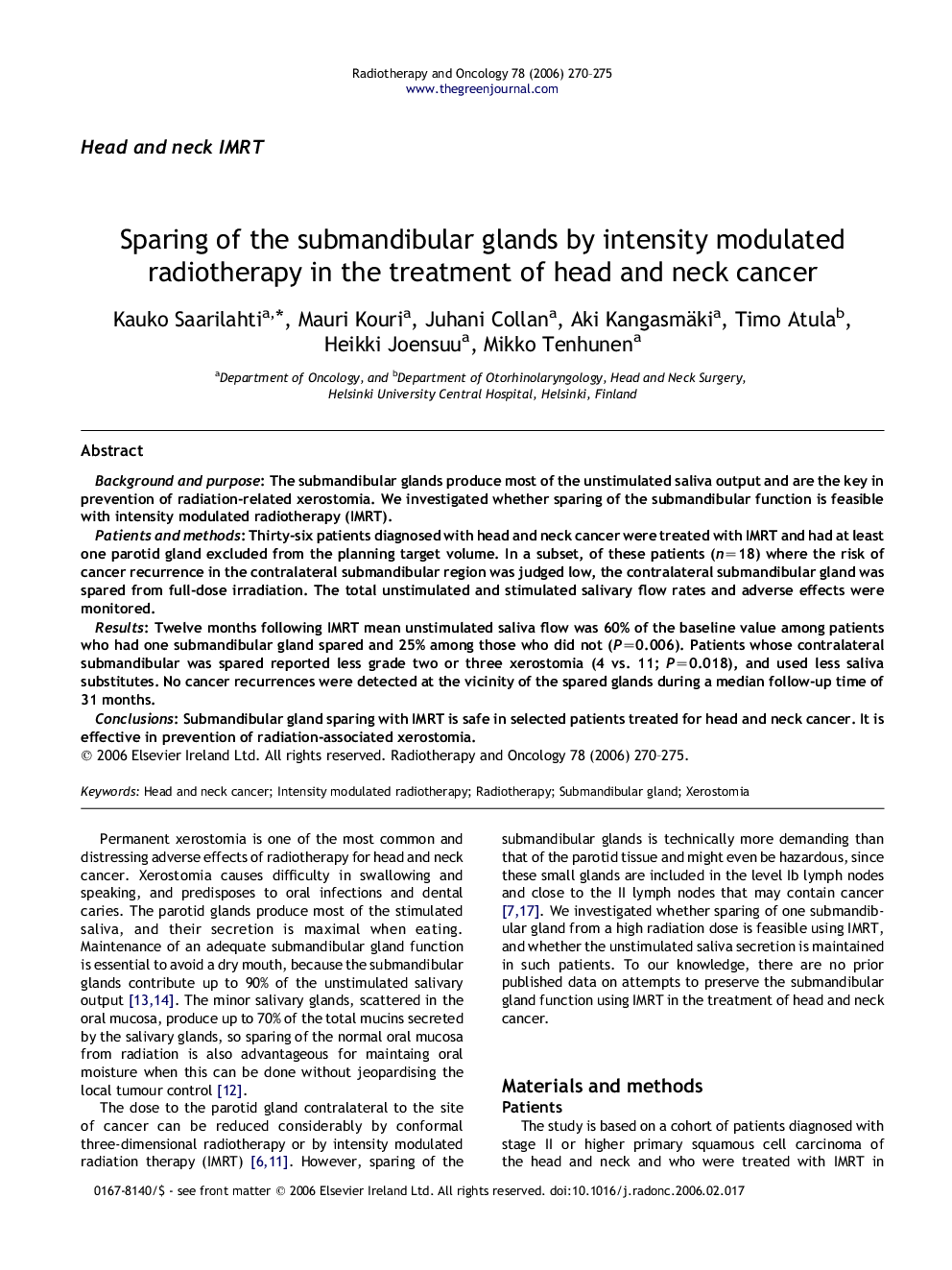| کد مقاله | کد نشریه | سال انتشار | مقاله انگلیسی | نسخه تمام متن |
|---|---|---|---|---|
| 2161539 | 1090922 | 2006 | 6 صفحه PDF | دانلود رایگان |

Background and purposeThe submandibular glands produce most of the unstimulated saliva output and are the key in prevention of radiation-related xerostomia. We investigated whether sparing of the submandibular function is feasible with intensity modulated radiotherapy (IMRT).Patients and methodsThirty-six patients diagnosed with head and neck cancer were treated with IMRT and had at least one parotid gland excluded from the planning target volume. In a subset, of these patients (n=18) where the risk of cancer recurrence in the contralateral submandibular region was judged low, the contralateral submandibular gland was spared from full-dose irradiation. The total unstimulated and stimulated salivary flow rates and adverse effects were monitored.ResultsTwelve months following IMRT mean unstimulated saliva flow was 60% of the baseline value among patients who had one submandibular gland spared and 25% among those who did not (P=0.006). Patients whose contralateral submandibular was spared reported less grade two or three xerostomia (4 vs. 11; P=0.018), and used less saliva substitutes. No cancer recurrences were detected at the vicinity of the spared glands during a median follow-up time of 31 months.ConclusionsSubmandibular gland sparing with IMRT is safe in selected patients treated for head and neck cancer. It is effective in prevention of radiation-associated xerostomia.
Journal: Radiotherapy and Oncology - Volume 78, Issue 3, March 2006, Pages 270–275